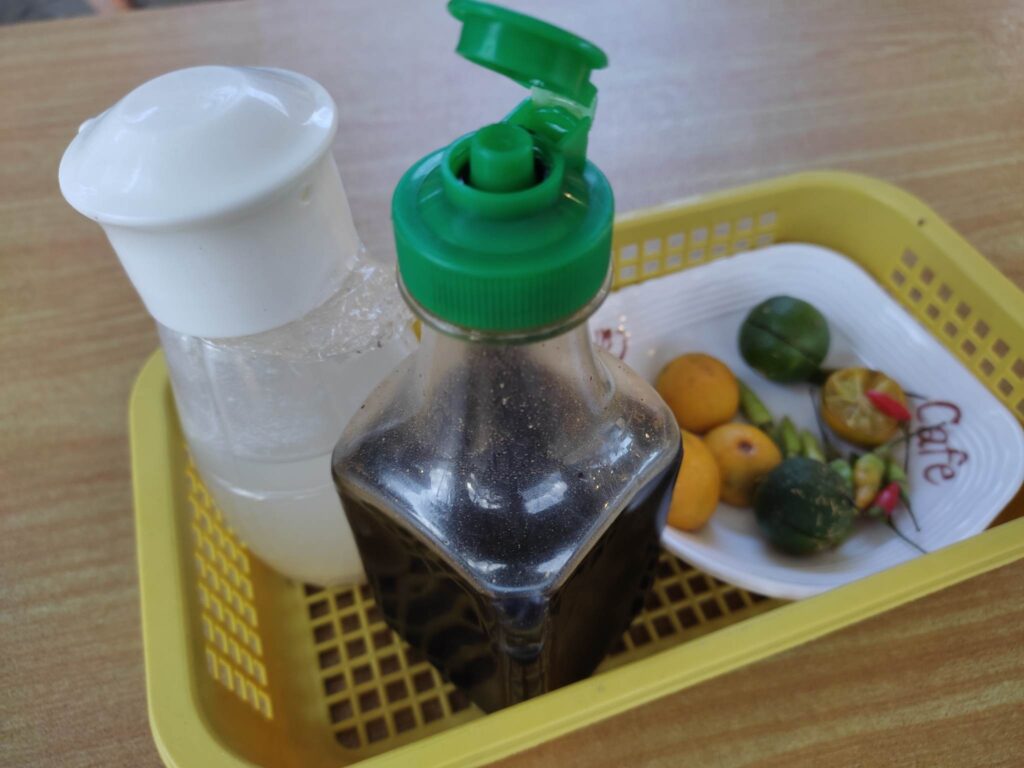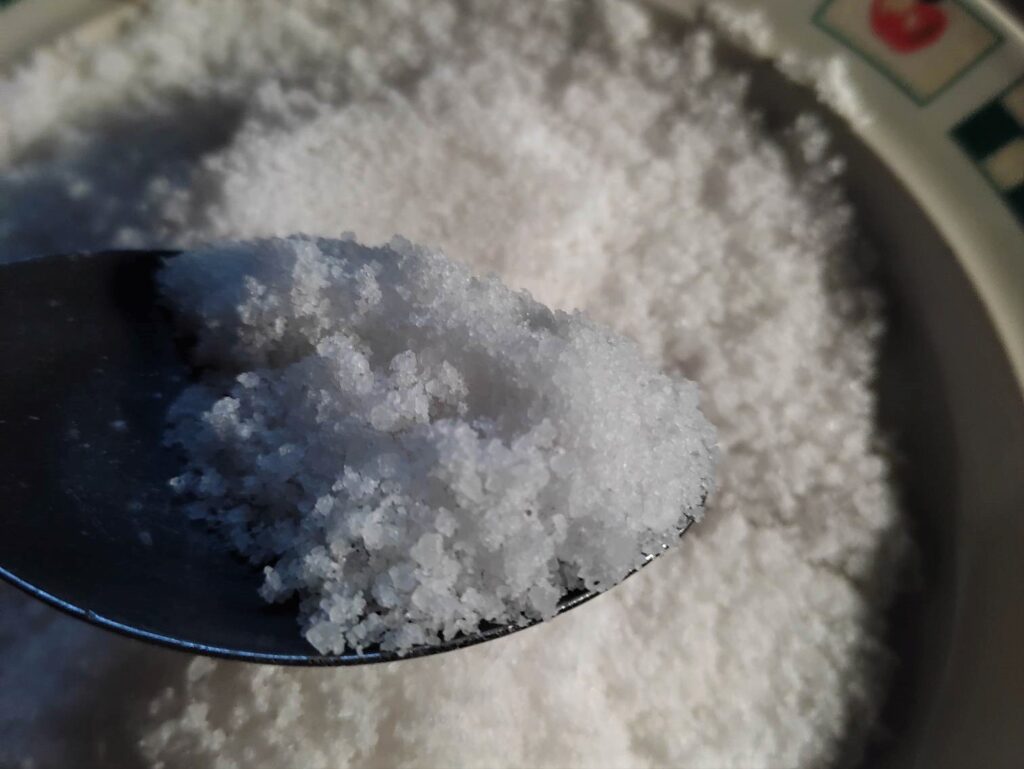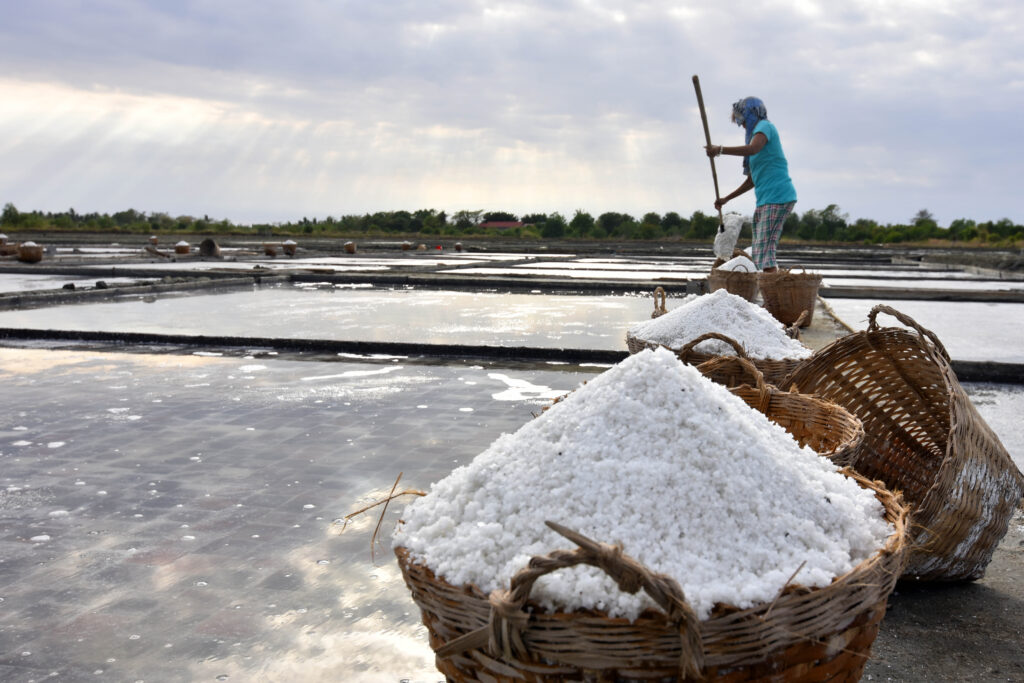Text and Photos by Henrylito D. Tacio
Additional Photos by Willie Lomibao
Stroke, sometimes called a brain attack, is among the list of the top killers of Filipinos. During the last 10 years, deaths from stroke remain high, with an average of 63,804 deaths. Thirty six percent of the total stroke deaths are not attended by any medical personnel, studies show.
Cardiovascular diseases (CVDs) – or diseases of the heart and blood vessels – are responsible for a third of death in the country. Part of the larger group of non-communicable diseases, CVDs account for 72% of deaths of Filipinos in 2021.
One of the reasons why strokes and CVDs are prevalent is that most Filipinos consume salt excessively. “Sodium increases the risk of heart disease, stroke and premature deaths when eaten in excess,” says the Geneva-based World Health Organization (WHO) in a statement.
Sodium is an essential nutrient in relatively small amounts to maintain a balance of body fluids and keep muscles and nerves running smoothly. Although table salt (sodium chloride) is the main source of sodium, it is also contained in other condiments such as sodium glutamate.
The global average salt intake is estimated to be 10.8 grams per day, more than double the WHO recommendation of less than 5 grams of salt per day (or less than 2,000 milligrams of sodium).
On the average, the Filipinos’ salt consumption per day is even higher – 11 grams (4,263 milligrams of sodium).
A review of salt intakes in Southeast Asia, the World Action on Salt and Health found that average salt intake in adult females in the Philippines was 7.3 grams per day, which was estimated from 24-hour dietary recalls. Salt intake in the adult population (both sexes) was estimated to be 3.1 grams per day, which was calculated from one-day diet samples and samples of commonly eaten foods which were weighed and chemically analyzed.
Why is this so? It’s because Filipinos love salty food. Most of them use substantial amounts of salt, soy sauce (toyo), fish sauce (patis) and fermented shrimp paste (bagoong) to achieve full flavor. They also love salt dipping sauces (sawsawan). In addition, they like eating dried fish (bulad).
This love for salt is understandable. After all, salt is abundant in a country that is surrounded with oceans and seas. Being an archipelago with more than 6,000 islands and a coastline of 36,000 kilometers, it will never run out of salt.
“Eating salty food is natural for all of us,” explains Meryl Louise T. Lapinig, a mother of two. “Most of us don’t have refrigerators. We can preserve our food by adding salt or fermenting them.”
Unfortunately, taking too much salt is bad for your health. “Unhealthy diets are a leading cause of death and disease globally, and excessive sodium intake is one of the main culprits,” said Dr. Tedros Adhanom Ghebreyesus, WHO Director-General.
Eating too much salt makes it the top risk factor for diet and nutrition-related deaths, the United Nations health agency points out. Aside from those mentioned earlier, more evidence is emerging documenting links between high sodium intake and increased risk of other health conditions such as gastric cancer, obesity, osteoporosis and kidney disease.
Salt was well known to the ancient Greeks who noted that eating salty food affected basic body functions such as digestion and excretion. This led to salt being used medically. The healing methods of Hippocrates (460 BC) especially made frequent use of salt. Hippocrates mentions inhalation of steam from salt-water.
Unfortunately, consuming excessive salt is unhealthy. “There is convincing data showing that people who eat salty food excessively have a shorter life span than those who eat salty food less,” wrote Dr. Rafael R. Castillo, the health columnist of Philippine Daily Inquirer.


Dr. Castillo cited the study done in Japan. “In the 1950s, the incidence of strokes in Japan reached alarming levels, prompting the government to take urgent action. The salt intake of the Japanese was very high then, and through a concerted multisectoral program which included a lot of public education, the Japanese reduced their salt intake by half. This reduced the average blood pressure of the population, and the rate of stroke was cut down by 80 percent. The average lifespan in Japan also increased significantly.”
Dr. Castillo, who’s a cardiologist, believed that if Filipinos will only follow what the Japanese had done, more than 50,000 lives can be saved annually.
Consuming more salt is especially bad if you already have some health problems. Sure, you like your French fries covered with salt, but if you have hemorrhoids, salt can make it worse. Excess salt retains fluids in the circulatory system that can cause bulging of the veins in the anus and elsewhere.
High salt intake can also trigger migraine in some people. Migraine is a throbbing headache, usually occurring on only one side of the head. (A woman who had suffered with migraines for 16 years finally experienced relief when researchers from Denmark’s Odense University gave her 500 to 600 milligrams of powdered ginger whenever she felt a headache coming on. Within 30 minutes, her migraine would be gone.)
In a study conducted at the Department of Community Medicine of St. Thomas Hospital in London, researchers discovered that salt could have a life-threatening effect on people with asthma. “A strong correlation was found between table salt purchases and asthma mortality in both men and children,” reported the researchers. Buying the salt wasn’t killing people; eating it was.
Anyone who has passed a kidney stone can verify that this is an experience he never wants to repeat. Most stones are calcium-based, so it’s essential that you avoid excessive intake of table salt and condiments high in sodium. Salt restriction will help decrease the concentration of calcium in the urine.
How well do you know that you have taken too much salt? For one, your brain feels foggy, according to Jamie Schmid in an article she wrote for Reader’s Digest. She cited an American study which followed a group of about 5000 men over the age of 65. “They found that men who had slightly lower sodium levels in the blood were about 30% more likely to develop cognitive decline,” she reported.
Another sign is raging thirst. Foods with high amounts of sodium make you feel thirstier, because sodium messes with the balance of fluid in your body, according to Harvard Health Publishing.
Still another sign, according to Schmid: the body is swelling in strange places. “Just one night of too much sodium can actually make you look and feel more bloated in the morning,” the Mayo Clinic said.
Having a stomach ulcer is another sign. Sodium can amplify damage to the lining of the stomach caused by infection with Helicobacter pylori bacteria. If not resolved, it may become a cause of stomach cancer.
One of the best methods of lowering the consumption of salt is implementing highly cost-effective sodium reduction policies. Doing so could save an estimated 7 million lives globally by 2030, according to the WHO.
But the newly-released WHO Global Report on Sodium Intake Reduction showed that the world is off-track to achieve its global target of reducing sodium intake by 30% by 2025. In fact, only 3% of the world’s population is protected by mandatory sodium reduction policies.
A comprehensive approach to sodium reduction includes adopting mandatory policies and WHO’s four “best buy” interventions related with sodium which greatly contribute to preventing noncommunicable diseases. These include:
1. Reformulating foods to contain less salt, and setting targets for the amount of sodium in foods and meals;
2. Establishing public food procurement policies to limit salt or sodium rich foods in public institutions such as hospitals, schools, workplaces and nursing homes;
3. Front-of-package labelling that helps consumers select products lower in sodium; and
4. Behaviour change communication and mass media campaigns to reduce salt/sodium consumption.
“There are proven measures that governments can implement and important innovations, such as low sodium salts,” said Dr Tom Frieden, President and CEO of Resolve to Save Lives, a not-for-profit organization working with countries to prevent 100 million deaths from cardiovascular disease over 30 years. “The world needs action, and now, or many more people will experience disabling or deadly – but preventable – heart attacks and strokes.”



